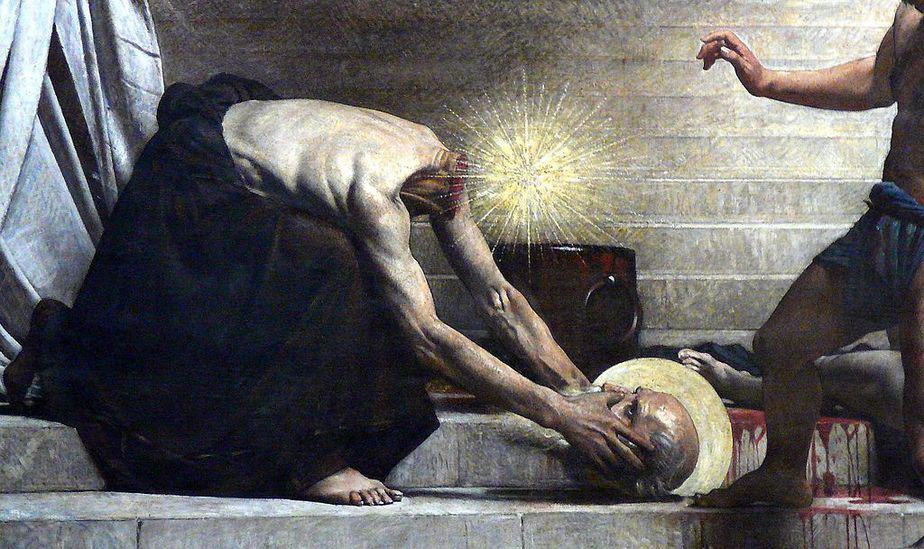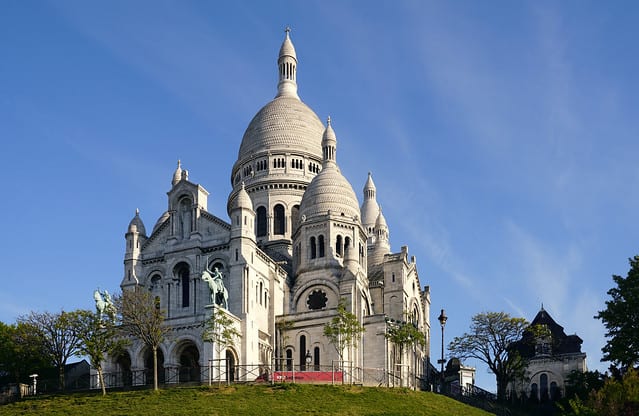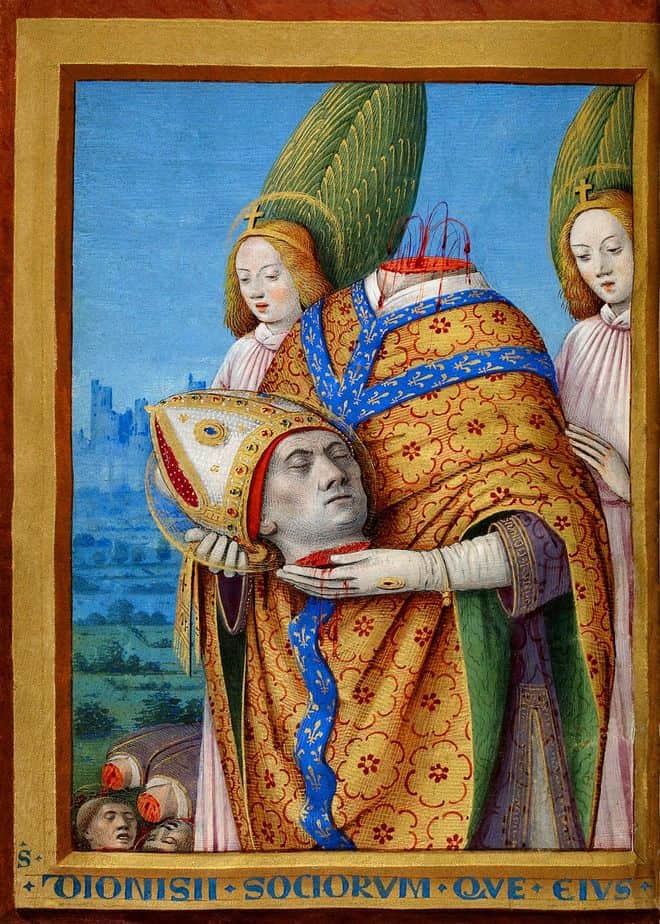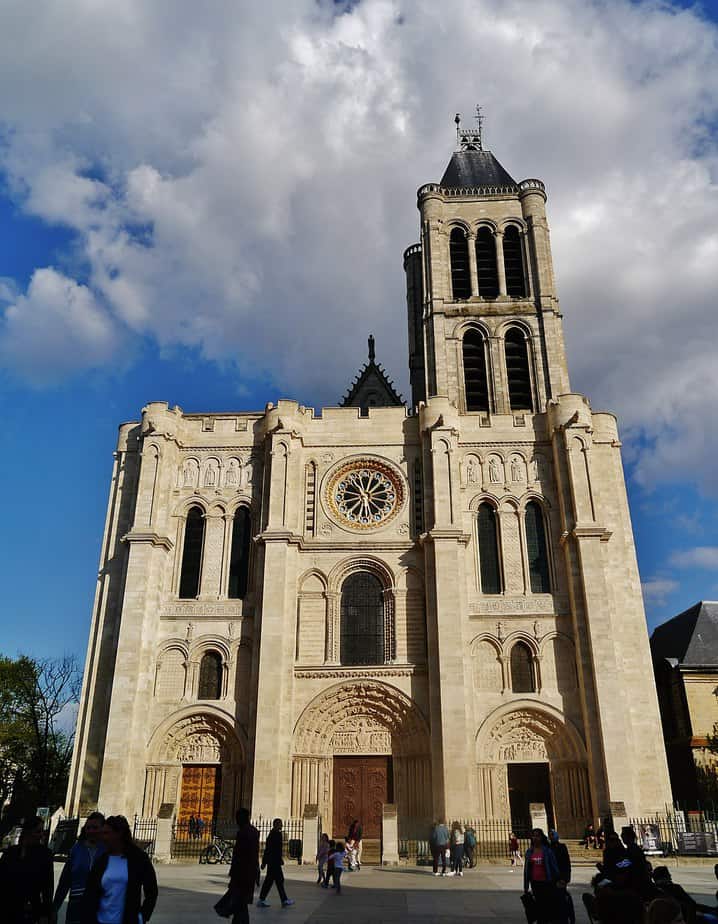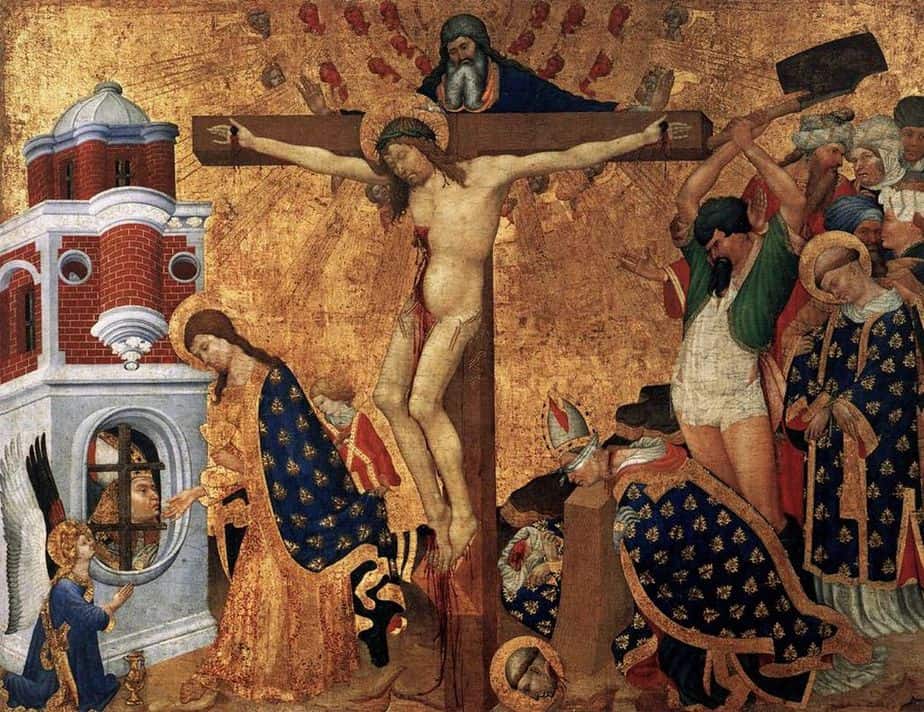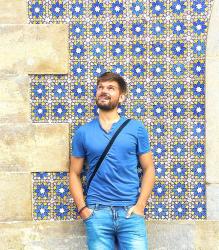8 facts about Saint Denis of Paris
France has been a secular country since a law passed in 1905. If secularity according to the French – known as laïcité – could be discussed for hours due to its very nuanced and complex definition, it didn’t erase more than 1500 years of Christian culture. Nowadays, the French countryside is still dominated by bell towers ; and religious establishments, names and customs are still predominant in the French culture.
In Paris, of all the Saints celebrated, one of the most important – and probably most unknown – is certainly the Patron Saint of Paris: Saint Denis of Paris.
He is the one who gave his name to a city located north of Paris.
Here are eight interesting facts about this important Saint.
1. Saint Denis, the Holy Messenger
Denis was born in the early third century in Italy. The circumstances of his early life are not very clear and known, but Denis was part of six people sent by Pope Fabian to convert Gaul to Christianity.
At the time, Paris was called Lutetia (Lutèce). It was an important city – but not the Capital yet – in Gaul, a territory roughly similar to current France, and whose people had learnt to coexist with the Romans since the Roman conquest wars in the 1st Century BC. The new predominant culture for the past three centuries had been a “gallo-roman” culture, mixing Celtic traits of the old Gauls’ culture with more modern traits of the Roman culture.
Mainly, the Parisii (the Gauls who lived in Lutetia) were polytheists.
Therefore, Denis’s mission was to spread the core principles of Christianity and invite Lutetia’s inhabitants to turn to this new religion.
2. The Bishop of Paris and the first Cathedral
Denis’s entered Lutetia from the South and quickly arrived into the Left Bank streets of the Roman city – where most of it lay.
The words he spoke and the stories he told resonated well in the minds of the Gallo-romans of Lutetia. In a short amount of time, Denis was heard and had quite an important bunch of followers. He was even appointed “Bishop”, a word deriving from the Greek “Episkopos”, which means “Guardian”, for Bishops are supposed to guard the authority and the message transferred to them through the Apostles by Jesus. Today, Denis is therefore considered to be the very first Bishop of Paris.
Christianity, however, was frowned upon by the Romans authorities. As the 3rd Century unwound, and as Christiany began to spread massively, the Emperor decided to persecute those who did not worship the Roman gods. Therefore, the growing group of Denis’s followers had to hide.
Denis chose to set his place of worship in a hidden crypt, underground. Through centuries, and as Christianity became the norm in Europe, this church grew above the ground and soon became the Saint-Mary-of-the-Fields Church. The crypt, although transformed, was never walled up.
During the French Revolution, the church was dismantled. But the crypt survived.
Today the Crypt still exists. It is very well hidden however. You can find it under an underground parking garage at number 14bis Rue Pierre Nicole in the 5th Arrondissement. Since it is located under a private building, access in not permitted to the public. However, after the crypt was threatened by floods, the government decided to classify it a Historic Monument, therefore protecting it from alterations. A plan to open the place to visits is currently being studied.
Since Denis was the first Bishop of Paris, the Saint-Mary-of-the-Fields crypt may be considered the first cathedral of Paris!
3. The Mount of Martyrs
At the end of the 3rd Century, persecutions against the Christians became really important. Eventually, Denis was caught and sentenced to death.
The execution by beheading did not take place within the walls of Lutetia, but rather outside of it, to the North, on a tall hill, that Christians had come to nickname “the Mount of Martyrs”, due to the high number of executions that took place there against Christians. This nickname is one of the explanations that historians retain as the origin of the name…Montmartre! (the other explanation being linked to the Temple of Mars that stood there during the Roman ages, thus leading to the name “Mons Martis”). I’ll leave it up to you to decide which etymology your prefer believing.
By the way, if you are interested in learning more secrets about Montmartre, you may book a Montmartre guided tour with one of our guides, here.
4. The Legend of Saint Denis
If you are a normal human being and that you end up beheaded (let’s hope not!), chances are your story will end up here… Well, for Denis, as always, things did not follow the norm.
According to the legend, after his beheading, Denis would have picked up his severed head and walked North, for six kilometers, before finally collapsing in a place of his choosing where he had decided to bury his head. On his path, he would have taken a long street, now named “Rue des Martyrs” (Martyrs Street).
Although, of course, this legend was probably born more than 500 years later in the Medieval songs and tales, and that the truth is certainly less epic, the paranormal story crafted the very special status of the now-called Saint-Denis of Paris.
5. A Last Home for Kings
Although the way his body reached this place is unsure (the legend not being considered), Saint Denis was buried in a place located to the North of Paris, where now lies the city of Saint-Denis.
A very simple shrine was erected in his memory. In the following century, a growing cult lead to the building of a small church in that place. Due to the legend that saints were buried there, the surrounding grounds became popular among aristocrats and were turned into a necropolis.
As it grew more and more popular, the church turned into an abbey. King Dagobert I (7th century) was the first king to choose it as his burial place. Since then, it became a tradition for the French kings to be buried in the church of Saint-Denis.
In the twelfth century, the church was rebuilt under the supervision of abbott Suger. Considering that God was light, Suger wanted his new church to let light in, much more than the roman churches of that time allowed. He then gathered the most modern techniques of architecture to build what is often considered the first gothic church.
The Saint-Denis Basilica had been extended and reworked through centuries, but a series of climatic events in the 19th centuryl massively damaged the structure. Today, of the entire building, only one façade remains from Suger’s masterpiece.
If you have spent some time in Paris, the Saint Denis Basilica is a good detour worth taking.
6. An inspiration for Artists
The visual aspect of Saint Denis’s legends makes him an easily recognizable saint in art, and a never-ending source of inspiration for artists.
Mostly represented as a decapitated figure, holding his own head in his hands, Saint Denis is often represented in sculpture. His statue stands by a small fountain, in the place where, after his beheading, he is believed to have washed his severed head, in Montmartre. You may see this statue in the small Square Suzanne Buisson.
The Notre-Dame Cathedral in Paris is also a place where many depictions of Saint Denis are visible. On the main façade, the Virgin’s Portal is decorated with one statue of Saint Denis holding his head, while the Saint Stephen Portal on the South side also bears such statue. Several other depictions of Saint Denis are also visible within the Cathedral, most notably on bas reliefs and stained-glass roses. The façade statues are still visible, despite the damage caused by the fire of April 15,2019.
At last, of course, the martyrdom of Saint Denis fueled painters’ imagination. A very common saint depicted on religious icons or French traditional Epinal prints, Saint Denis is also the subject of an impressive altarpiece of Champmol by Henri Bellechose (now visible at the Louvre Museum), or Leon Bonnat’s Martyrdom of Saint Denis, in the Pantheon.
7. The Saint Who Cures
In Catholicism, praying some Saints is believed to help fight some diseases. Fourteen saints are particularly important and are known as the Fourteen Holy Helpers.
Among them are, for instance, Saint Panthaleon against Cancer or Saint Christopher against the plague…
Whether you see it as a trait of humor, or as a quite coherent belief, Saint Denis is one of the Fourteen Holy Helpers and praying him is believed…to cure headaches !
8. October 9 and the Weather
Saint Denis is celebrated on October 9. In France, regional sayings are linked to this date, for it is believed that the day of Saint Denis is a good indicator of the winter to come.
Although various versions exist throughout the country, the general saying is “A la Saint-Denis, l’Hiver fait son nid.” which can be translated as “The winter settles on Saint Denis’s day”.
The saying comes from rural France where key dates where often observed in order to improve harvests. For instance another similar observation was that of the “Ice Saints” (mid-May) which were believed to be the last cold days which farmers needed to wait for before planting the most fragile seeds, for there was a chance for them to freeze.
Saint Denis’s saying means that, according to popular belief, the weather observed on October 9 foresees a similar weather for the winter to come…
Planning a trip to Paris ? Get ready !
These are Amazon’s best-selling travel products that you may need for coming to Paris.
Bookstore
- The best travel book : Rick Steves – Paris 2023 – Learn more here
- Fodor’s Paris 2024 – Learn more here
Travel Gear
- Venture Pal Lightweight Backpack – Learn more here
- Samsonite Winfield 2 28″ Luggage – Learn more here
- Swig Savvy’s Stainless Steel Insulated Water Bottle – Learn more here
Check Amazon’s best-seller list for the most popular travel accessories. We sometimes read this list just to find out what new travel products people are buying.





